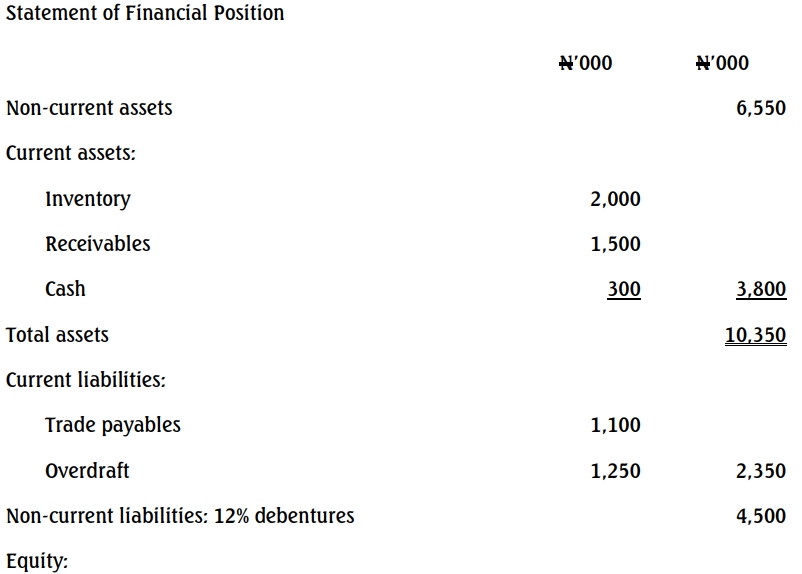- 15 Marks
FM – May 2016 – L3 – Q7 – Financing Decisions and Capital Markets
Comparing the cost of financing equipment replacement through an outright purchase funded by a loan versus a finance lease.
Question
MK Plc is considering the best way to finance the replacement for a particular high specification piece of equipment that has become too costly to maintain. The replacement equipment is estimated to have a useful life of 4 years with no residual value after that time.
Two alternative financing schemes are being evaluated:
- Scheme A: Buy the equipment outright funded by a bank loan
- Scheme B: Enter into a four-year finance lease
Scheme A: Buy outright, funded by a bank loan
MK Plc could purchase the equipment outright at a cost of N200 million on July 1, 2016. MK Plc can normally borrow at an annual interest rate of 13% per year.
Scheme B: Four-year finance lease
The equipment would be delivered on July 1, 2016, and MK Plc would pay a fixed amount of N58,790,000 each year in advance, starting on July 1, 2016, for four years. At the end of four years, ownership of the equipment will pass to MK Plc without further payment.
Other Information:
- MK Plc has a cost of equity of 20% and WACC of 16%
- MK Plc is liable to company tax at a marginal rate of 30%, which is settled at the end of the year in which it arises
- Tax depreciation allowances on the full capital cost are available in equal instalments over the first four years of operation
You are required to:
a.
Calculate which payment method is expected to be cheaper for MK Plc and recommend which should be chosen solely on the present value of the two alternatives as at July 1, 2016. (13 Marks)
b.
Discuss the appropriateness of the discount rate used in (a). (2 Marks)
Find Related Questions by Tags, levels, etc.
- Tags: Discount rate, Equipment Financing, Financing, Lease, Loan, Present Value
- Level: Level 3


